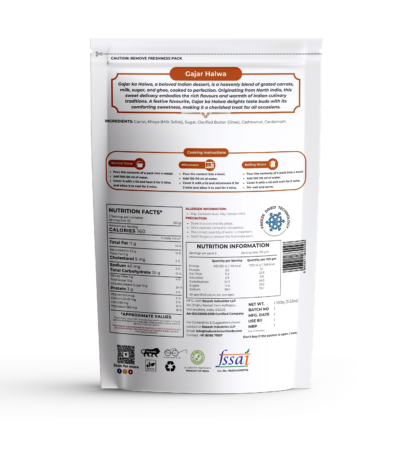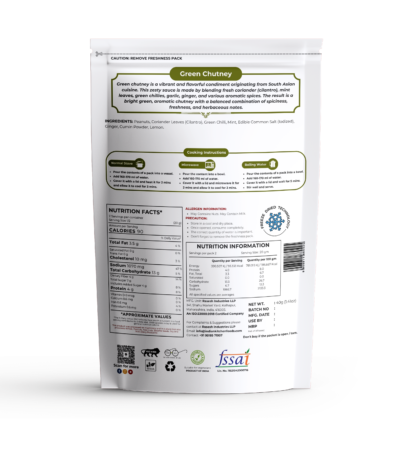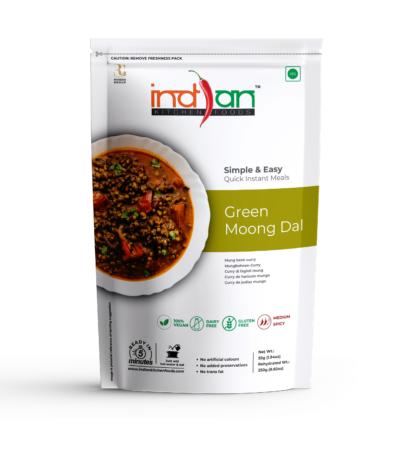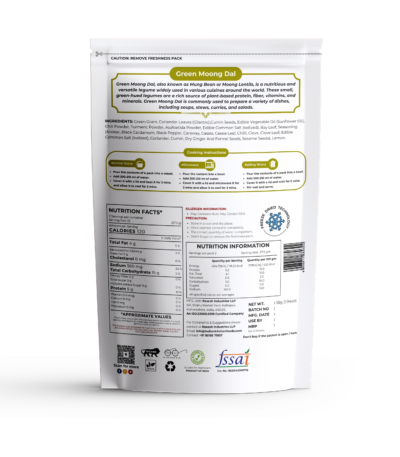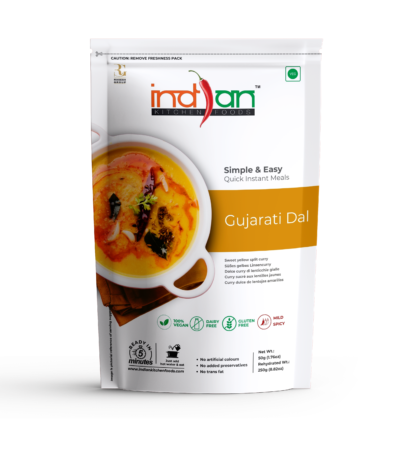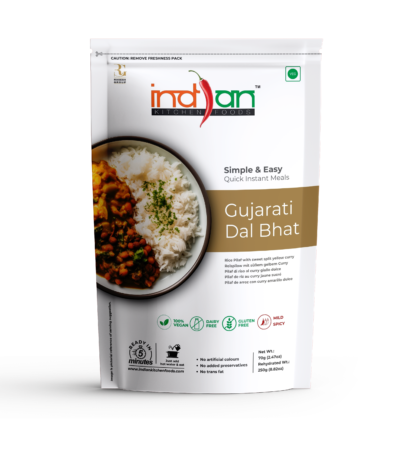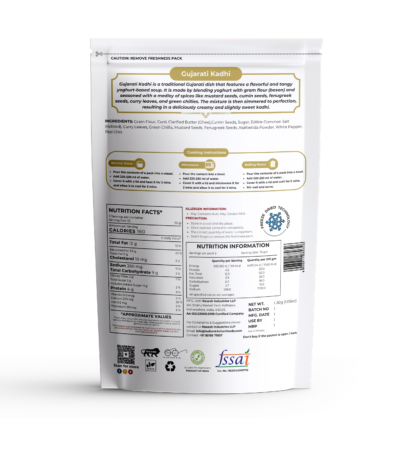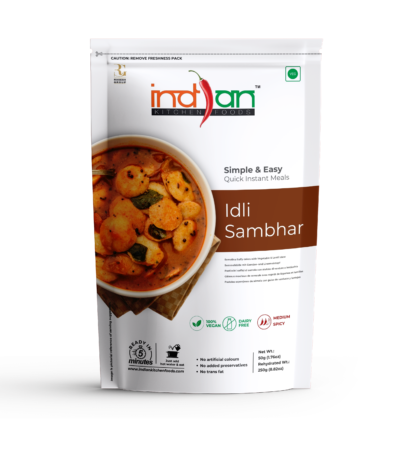Showing 13–24 of 78 results
Gajar Halwa
From ₹185.00Gajar Halwa is a traditional Indian dessert made by slowly cooking grated carrots (gajar) in milk, sugar, and ghee, and flavored with cardamom. This rich, sweet treat is often garnished with nuts like almonds and pistachios, making it a beloved dessert, especially during winter months and festive occasions.
Green Chutney
From ₹130.00Green chutney is a tangy and spicy Indian condiment made from fresh herbs like coriander (cilantro) and mint, along with green chilies, lemon juice, and spices. It is commonly served as a dipping sauce for snacks like samosas, pakoras, or sandwiches, adding a refreshing and zesty flavor to any dish.
Green Chutney (No Onion – No Garlic / Jain)
From ₹130.00Green chutney is a tangy and spicy Indian condiment made from fresh herbs like coriander (cilantro) and mint, along with green chilies, lemon juice, and spices. It is commonly served as a dipping sauce for snacks like samosas, pakoras, or sandwiches, adding a refreshing and zesty flavor to any dish.
Green Chutney (No Onion – No Garlic / Jain)
From ₹130.00Green chutney is a tangy and spicy Indian condiment made from fresh herbs like coriander (cilantro) and mint, along with green chilies, lemon juice, and spices. It is commonly served as a dipping sauce for snacks like samosas, pakoras, or sandwiches, adding a refreshing and zesty flavor to any dish.
Green Moong Dal
From ₹160.00Green moong dal is a light and nutritious lentil dish made from split green gram, known for its mild flavor and easy digestibility. It is often cooked with spices and served with rice or roti, offering a wholesome and protein-rich meal.
Green Moong Dal (No Onion,No Garlic /Jain)
From ₹160.00Green moong dal is a light and nutritious lentil dish made from split green gram, known for its mild flavor and easy digestibility. It is often cooked with spices and served with rice or roti, offering a wholesome and protein-rich meal.
Gujarati Dal
From ₹160.00Gujarati dal is a flavorful and slightly sweet lentil soup made with toor dal, tempered with spices like mustard seeds, cumin, and asafoetida, and sweetened with jaggery. It’s a staple in Gujarati cuisine, known for its balance of tangy, sweet, and spicy flavors.
Gujarati Dal (No Onion,No Garlic /Jain)
From ₹160.00Gujarati dal is a flavorful and slightly sweet lentil soup made with toor dal, tempered with spices like mustard seeds, cumin, and asafoetida, and sweetened with jaggery. It’s a staple in Gujarati cuisine, known for its balance of tangy, sweet, and spicy flavors.
Gujarati Dal Bhat
From ₹160.00Gujarati Dal Bhat is a traditional meal consisting of sweet and tangy lentil soup (dal) served with steamed rice (bhat). Known for its unique blend of flavors, it’s typically accompanied by chutney, pickle, or vegetables, offering a comforting, wholesome meal.
Gujarati Dal Bhat (No Onion,No Garlic /Jain)
From ₹160.00Gujarati Dal Bhat is a traditional meal consisting of sweet and tangy lentil soup (dal) served with steamed rice (bhat). Known for its unique blend of flavors, it’s typically accompanied by chutney, pickle, or vegetables, offering a comforting, wholesome meal.
Gujarati Kadhi
From ₹165.00Gujarati kadhi is a tangy and sweet yogurt-based curry made with chickpea flour (besan), flavored with spices like mustard seeds, cumin, and ginger. Unlike other kadhis, it has a distinctive sweet taste from jaggery and is often served with rice or khichdi, making it a comforting and balanced meal.
Idli Sambhar
From ₹140.00Idli Sambar is a beloved South Indian dish, combining soft, steamed rice-lentil cakes called idlis with a flavorful, tangy lentil stew known as sambar. Idlis have a light, fluffy texture, while sambar is packed with vegetables and spices. Together, they create a balanced, nutritious meal that’s both satisfying and delicious. Often accompanied by coconut chutney, this dish is enjoyed at any time of day.
Online Sports Nutrition and Natural Dietetics.
Chances are there wasn't collaboration, communication, and checkpoints, there wasn't a process agreed upon or specified with the granularity required. It's content strategy gone awry right from the start. Forswearing the use of Lorem Ipsum wouldn't have helped, won't help now. It's like saying you're a bad designer, use less bold text, don't use italics in every other paragraph. True enough, but that's not all that it takes to get things back on track.
The villagers are out there with a vengeance to get that Frankenstein
You made all the required mock ups for commissioned layout, got all the approvals, built a tested code base or had them built, you decided on a content management system, got a license for it or adapted:
- The toppings you may chose for that TV dinner pizza slice when you forgot to shop for foods, the paint you may slap on your face to impress the new boss is your business.
- But what about your daily bread? Design comps, layouts, wireframes—will your clients accept that you go about things the facile way?
- Authorities in our business will tell in no uncertain terms that Lorem Ipsum is that huge, huge no no to forswear forever.
- Not so fast, I'd say, there are some redeeming factors in favor of greeking text, as its use is merely the symptom of a worse problem to take into consideration.
- Websites in professional use templating systems.
- Commercial publishing platforms and content management systems ensure that you can show different text, different data using the same template.
- When it's about controlling hundreds of articles, product pages for web shops, or user profiles in social networks, all of them potentially with different sizes, formats, rules for differing elements things can break, designs agreed upon can have unintended consequences and look much different than expected.
This is quite a problem to solve, but just doing without greeking text won't fix it. Using test items of real content and data in designs will help, but there's no guarantee that every oddity will be found and corrected. Do you want to be sure? Then a prototype or beta site with real content published from the real CMS is needed—but you’re not going that far until you go through an initial design cycle.












